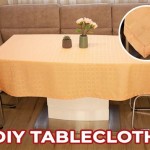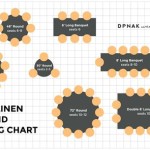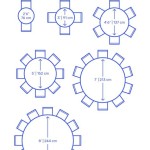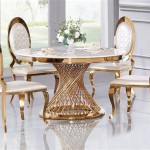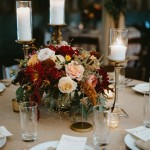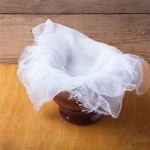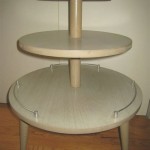Uses of Table Napkins
Table napkins, often overlooked, are versatile items extending beyond their primary function of maintaining cleanliness during meals. Their historical evolution and diverse applications have cemented their place in various social and practical contexts. From formal dining settings to casual everyday use, table napkins serve purposes ranging from hygiene and etiquette to decorative enhancement and environmental responsibility.
Hygiene and Cleanliness
The primary purpose of a table napkin is to provide a sanitary barrier against food spills and debris. During a meal, individuals can use a napkin to dab their mouths, wipe their fingers, and protect clothing from accidental stains. This simple act contributes significantly to maintaining a clean and presentable appearance throughout the dining experience. The choice of napkin material, whether cloth or paper, can influence its effectiveness in absorbing liquids and removing food particles. Cloth napkins, typically made from absorbent materials like cotton or linen, offer superior absorbency and reusability compared to disposable paper napkins.
Proper placement of the napkin also contributes to hygiene. Typically, the napkin is placed on the lap immediately after being seated. This position designates the napkin as a personal safeguard against spills and signifies readiness to partake in the meal. If leaving the table temporarily, the napkin should be placed on the chair, indicating the diner's intention to return. Placing the napkin on the table usually signals the completion of the meal.
The use of napkins extends beyond self-hygiene to prevent the spread of germs. By using a napkin to cover a cough or sneeze, individuals can minimize the dispersion of respiratory droplets. This practice is particularly relevant in public dining environments where close proximity to others increases the risk of transmission. In this context, disposable paper napkins offer a convenient and sanitary solution, minimizing the potential for cross-contamination.
In restaurants and catering services, the cleanliness of napkins is paramount. Commercial laundry services employ strict protocols to ensure that cloth napkins are thoroughly sanitized and free from stains. Paper napkins, being disposable, eliminate the need for cleaning and contribute to a higher standard of hygiene, particularly in high-volume settings.
Etiquette and Social Grace
Table napkins play a crucial role in demonstrating proper etiquette and social grace. The way a napkin is used and handled conveys respect for the host and fellow diners. Placing the napkin on the lap promptly after being seated signals an awareness of etiquette norms. Unfolding the napkin gracefully, rather than shaking it open or crumpling it, exemplifies refined behavior.
During the meal, the napkin should be used discreetly to dab the mouth, avoiding any forceful or noisy wiping motions. If it is necessary to leave the table temporarily, the napkin should be placed on the chair, indicating an intention to return. This prevents confusion among the waitstaff and signals that the diner has not yet finished the meal. When the meal is complete, the napkin should be placed loosely on the table to the left of the plate. A neatly folded napkin might suggest dissatisfaction with the meal, while a crumpled or wadded napkin could be perceived as disrespectful.
The type of napkin used can also influence the perceived level of formality. Linen napkins are typically reserved for formal occasions, while cotton napkins are suitable for less formal gatherings. Paper napkins are often used in casual settings or for quick meals. The choice of napkin should align with the overall ambiance of the event.
In certain cultures, specific napkin etiquette rules are observed. These may include the way the napkin is folded, the side of the plate on which it is placed, or the manner in which it is used. Awareness of these cultural nuances demonstrates sensitivity and respect for local customs. For example, in some European countries, it is considered impolite to wipe one's mouth excessively, while in others, it is expected to do so frequently.
Mastering napkin etiquette contributes to a more comfortable and enjoyable dining experience for all involved. It demonstrates an understanding of social norms and a commitment to maintaining a refined and respectful demeanor.
Decorative Enhancement and Theme Integration
Beyond their functional and etiquette-related aspects, table napkins can serve as decorative elements, enhancing the overall aesthetic of a dining setting. The choice of napkin color, pattern, and material can complement the table linens, tableware, and other decorative items, creating a cohesive and visually appealing presentation.
Napkin folding techniques offer a creative way to elevate the visual appeal of a table setting. Simple folds, such as the classic rectangle or triangle, are suitable for casual gatherings, while more elaborate folds, such as the rose or swan, are often used for formal occasions. The choice of fold should align with the overall style and theme of the event.
The color of the napkins can be used to create contrast or harmony with the other table elements. Brightly colored napkins can add a pop of color to a neutral table setting, while muted tones can create a more subtle and sophisticated look. Patterned napkins can introduce visual interest and complement the design of the tableware.
For themed events, napkins can be chosen to reflect the specific theme. For example, nautical-themed napkins with stripes or anchors can be used for a seaside party, while floral-patterned napkins can be used for a garden party. The use of themed napkins adds a playful and festive touch to the event.
Napkin rings can be used to further enhance the decorative appeal of napkins. These rings come in a variety of styles and materials, from simple metal rings to ornate jeweled rings. The choice of napkin ring should complement the style of the napkins and the overall table setting.
In addition to their aesthetic value, decorative napkins can also serve as conversation starters. Unique napkin folds or interesting patterns can spark discussion among guests and contribute to a more engaging and memorable dining experience.
Practical and Alternative Applications
While primarily associated with dining, table napkins possess practical applications beyond the realm of mealtime. Their absorbent qualities and versatility make them useful in various situations. For example, a napkin can be used to clean up small spills or messes, protecting surfaces from stains and damage. In the absence of a dedicated cleaning cloth, a napkin can serve as a temporary substitute.
During outdoor activities, such as picnics or barbecues, napkins can be used for a variety of purposes. They can serve as makeshift hand towels, protecting hands from dirt and grime. They can also be used to wrap food items, preventing them from drying out or becoming contaminated. In a pinch, a napkin can even be used as a temporary bandage for minor cuts and scrapes.
In crafting and DIY projects, napkins can be used for decorative purposes. Printed napkins can be decoupage onto various surfaces, adding a decorative touch to furniture, boxes, or other items. They can also be used to create paper flowers or other decorative elements.
Travelers often find napkins useful for maintaining hygiene during long journeys. They can be used to wipe down surfaces, clean hands, or absorb spills. Disposable paper napkins are particularly convenient for travel, as they can be easily disposed of after use.
In healthcare settings, napkins can be used to protect patients' clothing during meals or procedures. They can also be used to clean up spills and messes, maintaining a sanitary environment. In this context, disposable paper napkins are often preferred due to their hygienic properties.
The versatility of table napkins extends beyond these specific examples. Their inherent properties of absorbency, disposability (in the case of paper napkins), and reusability (in the case of cloth napkins) make them adaptable to a wide range of practical situations. The unassuming table napkin, therefore, possesses a utility that far exceeds its common perception as merely a dining accessory.

Five Uses Of Dinner Napkins

Five Uses Of Dinner Napkins

5 Uses For The Napkin Five Star School Of Etiquette

8 Ways To Use A Napkin With Proper Table Etiquette Wikihow

Fine Dining Etiquette What Is The Proper Way To Use A Table Napkin

Five Uses Of Dinner Napkins

Ultimate Dining Etiquette Table Setting What Do S And Don Ts

Five Uses Of Dinner Napkins

10 Surprising Uses For Table Napkins All Cotton And Linen

Napkin Etiquette When To Take Where Put How Use
Related Posts

